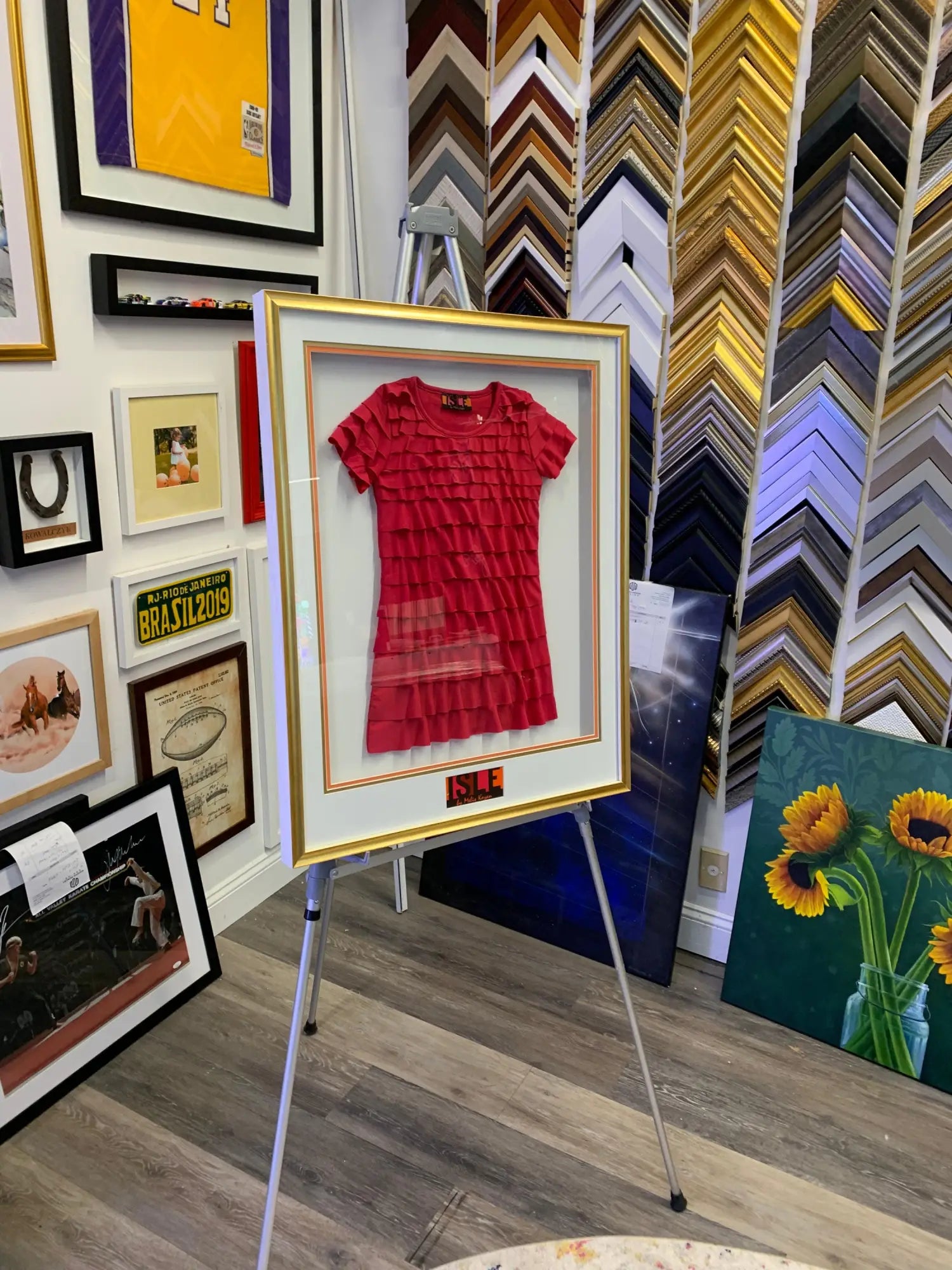
What is Conservation framing for your artwork
Conservation framing is a method of custom framing artwork that focuses on preserving the integrity and condition of the piece. This can be especially important for valuable or sentimental pieces, as well as for artworks made with delicate materials or techniques. Conservation framing uses acid-free and archival-quality materials to prevent deterioration and protect the artwork from environmental factors such as light, humidity, and pollution.
There are several key components to conservation framing:
-
Matting: The mat, or border, around the artwork serves as a buffer between the artwork and the glass. Conservation mats are made from acid-free, pH-neutral materials that will not harm the artwork.
-
Glass: Conservation glass is specially treated to filter out harmful UV light, which can fade and damage artwork over time. It is also less reflective than regular glass, which can reduce glare and make it easier to view the artwork.
-
Backing: The backing material used in conservation framing should also be acid-free and archival-quality. It should be sturdy enough to support the artwork, but not so rigid that it causes stress on the piece.
-
Hinging: The artwork should be attached to the backing board in a way that allows it to expand and contract with changes in humidity, but without causing damage. Conservation hinging techniques use acid-free tape or specially formulated adhesives to attach the artwork to the backing board.
-
Sealing: The frame and all of its components should be sealed to prevent dust and other contaminants from entering and damaging the artwork. This is typically done with a foam core backing and sealant around the edges of the frame.
By using conservation framing techniques, you can help ensure that your artwork is protected and preserved for future generations to enjoy.

Leave a comment